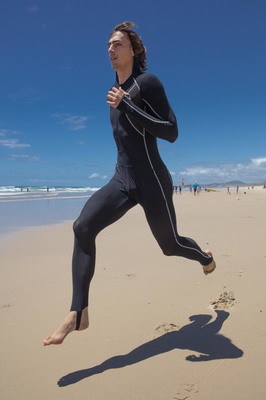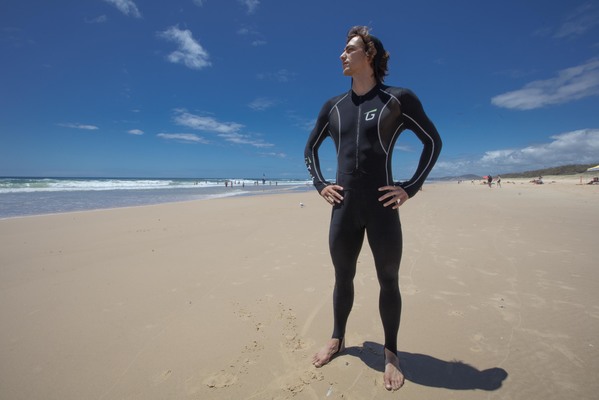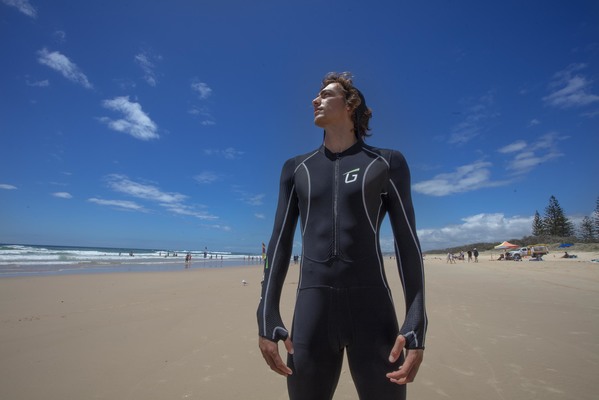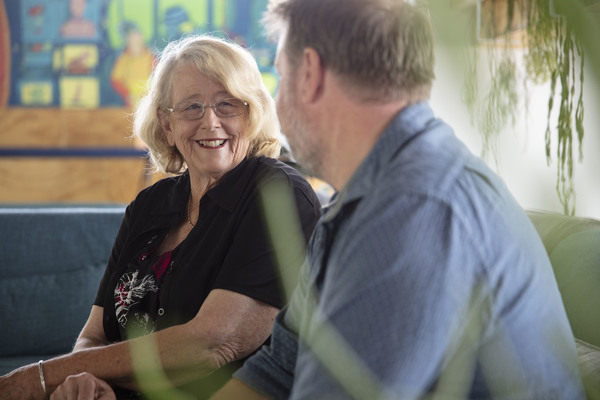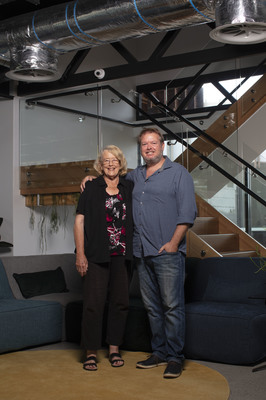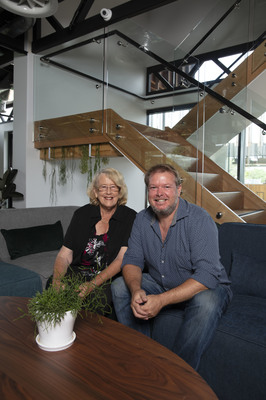When astronauts return from space, they get back pain, lose their good posture and often require spinal surgery.
Professor of Physiotherapy Carolyn Richardson knows this fact only too well as her research into back pain has taken her to study what she named “gravity” and “movement” muscles with NASA and the European Space Agency.
Many years of research has resulted in the development of an exercise model and tools including a gravity suit which artificially apply gravity and can strengthen deep gravity muscles and develop core body strength. This ground-breaking research can improve the health of the general population, reduce injury risk and maximise athletic performance.
It’s a long way to NASA from Peregian Beach but the new Digital Hub has become the base for GravityFit, a partnership between Professor Richardson and her son, patent and technology lawyer David Richardson and the pair regularly make the international journey.
Professor Richardson believes their work will bring about a “big change” in the way people exercise.
Professor Richardson’s work began when she was studying physiotherapy at the University of Queensland in the 1960s when space travel was at its height in the public arena in the lead up to the first moon landing in 1969.
“I had a lecturer who said not having gravity would be a problem,” she said.
“In the 80s I did a PhD and thought I’ll take away gravity and see what happens (to the muscles)”.
That research propelled Professor Richardson into space study.
Her research into back pain made her a leader in the studies of core stability, a concept so commonly used in exercise today.
She wrote a book on back pain which gained her an invitation as one of only eight experts in different fields at a world-wide symposium on back pain held at the European Space Agency (ESA) in the Netherlands.
“We were close to producing our results so I gave it to ESA,” she said.
“I was talking about core and anti-gravity muscles and the need for gravity to work them. They were fairly impressed,” she said.
As a chief scientist she worked on the Berlin bed rest study. Participants spent eight weeks in bed while scientists studied the effects. Some looked at bones and Professor Richardson’s team looked at muscles.
“We found some muscles got bigger and some got smaller.”
The results were similar to those found with astronauts returning from space.
“There are some muscles we need on earth that wither away (in space). Down here we need muscles to hold up our spine, weight bearing through our legs. “Weight bearing through our arms gives us the strength in the middle curve of the spine. It collapses if it’s not good.”
“In space they use the big muscles. I call them the movement muscles. These muscles, such as those used when swinging your arm to propel you through space, get bigger.”
Professor Richardson observed the same conditions that occur in zero Gravity are increasingly common with modern lifestyles. We are increasingly encouraged to minimise the effect of gravity on our body – driving instead of walking, lying on the couch, slouching over the computer at work. When we minimise the sensory effect of gravity on our bodies, the gravity muscles get weak over time and this causes serious musculo-skeletal health issues (just like in the astronauts).
Perhaps the most obvious example of not using our gravity muscles effectively is when we slump. If your gravity muscles are strong, especially your spinal core muscles, you naturally have good posture and your spine and joints are protected from injury and pain. Core body performance is optimised when your muscles are doing what they are designed to do.
By targeting and strengthening these deep muscles, the Richardsons’ GravityFit model can improve performance, assist in healing or provide the basis for a healthier, more active lifestyle.
The system uses a range of exercise tools, devices and programs to progressively increase the sensory effect of gravity to activate and strengthen the gravity muscles that provide the framework for effective stability and movement whatever your physical needs and ability.
David said the tools they have produced including a gravity suit, provides an axial load through the spine that replicates the stimulus gravity provides.
“That stimulates the deep muscles you need to strengthen the body,” he said.
“It makes you feel you want to stretch your arms, you feel you want to stretch tall. It’s a resistance load. It makes you feel like you have postural awareness and it automatically gives you better posture, you feel stronger, have better balance.”
The GravityFit exercise model introduces an artificial way of applying gravity. By applying compression to the hands, under the feet and on the head the gravity suit acts as a gravitational force.
Elite athletes including some champion golfers and national runners are already using the gravity suits to enhance performance and prevent injury.
“It’s very much a training garment,” David said. “They’ll be stimulating the deep muscles building muscular strength which makes the muscles work better.
When your deep muscle system is strong, especially your core, your body has more power, agility, balance and better all-round stability and posture. But modern life and many types of exercise actually weaken these deep muscles.
The idea for GravityFit was conceived in 2010 when David lodged and was granted patents on the technology. Over the past few years they’ve tested and modified their prototype GravityFit suit.
Manufactured in China the garment has been tested and modified a dozen times and they plan to have their product commercially available in May.
There is already a waiting list of clients for the product with athletes their top clients. Physiotherapists are also seeing the possibilities of the technology for use for people with musculo-skeletal issues and people who are bed-ridden.
The Federal Government recently acknowledged the significance of the technology to the sports performance, space travel and rehabilitation industry. GravityFit was awarded a grant of almost $480,000 to assist them to commercialise their garment.
Wide Bay MP Llew O’Brien described GravityFit’s success as an inspiration to other businesses.
For more information on GravityFit email info@gravityfit.com or visit www.gravity.fit.com.au

